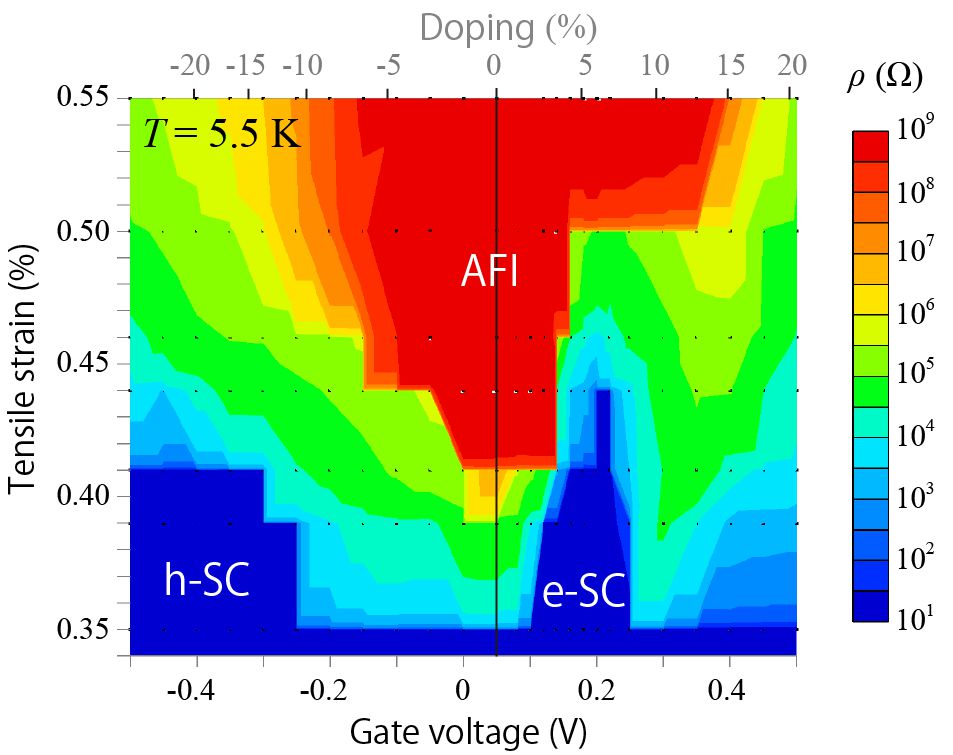Simultaneous control of bandwidth and bandfilling
Organic materials are soft and can be stretched even at low temperature. Our organic Mott-FETs are also soft enough to be compressed or expanded with a plastic substrate and show a band-width-controlled Mott/superconducting transitions. This kind of lattice modulation has been demonstrated in our recent experiments by mechanically pushing a poly-ethylene naphthalate (PEN) substrate covered with gold gate electrode and parylene-C dielectric from the back side (Figure 2). The organic Mott-insulator k-(BEDT-TTF)Cu[N(CN)2]Cl (k-Cl) laminated on top of the substrate exhibited superconductor-to-insulator transition by bending the substrate where the surface has an effect of tensile strain in a longitudinal direction. The strain necessary for this transition is only 0.3 % while the resistance change reached ten orders of magnitude, which demonstrates high sensitivity of the Mott-insulator. The phase diagram obtained by simultaneous scans of strain and temperature well reproduces that of hydrostatic pressure. This means that one-dimensional tensile strain corresponds to an effective negative pressure in k-Cl system.
Then, a field-effect was examined by applying a gate electric field. The transfer characteristics at higher tensile strain showed only moderate device mobility of around 5 cm2/Vs. When the system was forced to stay in a mixed phase state, where superconducting and Mott-insulating phases coexist, the electric-field-effect maximized to show device mobility up to 5900 cm2/Vs. This high response of the device can be attributed to an increase of superconducting fraction at application of gate voltage. In order to examine the above hypothesis, we have applied a magnetic field up to 7 T. Indeed, the field-effect has been considerably suppressed because the superconducting phases are destroyed by the magnetic field. This electric-field-induced superconductivity seems to originate from a decrease of Coulomb repulsion among carriers by electrostatic doping effect.

- M. Suda, Y. Kawasugi, T. Minari, K. Tsukagoshi, R. Kato, and H. M. Yamamoto,
Strain-Tunable Superconducting Field-Effect Transistor with an Organic Strongly-Correlated Electron System
Adv. Mater., 26, 3490–3495 (2014) - Yoshitaka Kawasugi, Kazuhiro Seki, Satoshi Tajima, Jiang Pu, Taishi Takenobu, Seiji Yunoki, Hiroshi M. Yamamoto, and Reizo Kato, “Two-dimensional ground-state mapping of a Mott-Hubbard system in a flexible field-effect device”
Sci. Adv. 5, eaav7282 (2019)